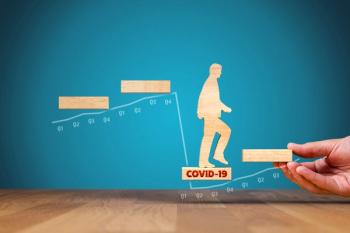
Top 4 technologies for community pharmacists to watch
The future of community pharmacy is a high-tech, connected world, where teleprescribing is common and pharmacists share information with patients via smart lenses.
The future of community pharmacy is a high-tech, connected world, where teleprescribing is common and pharmacists share information with patients via smart lenses. At least that is the vision of Dan Benamoz, RPh, CEO of Palm Beach, Fla.-based Pharmacy Development Services, a pharmacist training, consulting, and mentoring firm.
In an exclusive interview with Drug Topics, Benamoz shared the top technologies that will impact the way pharmacists work with patients in the future.
Information sharing via “smart” lens
Dan BenamozAlcon, a Novartis company, and Google are developing a “smart lens,” a contact lens with embedded sensors and microchips, to help diabetes patients manage their disease. This innovative technology would provide “a continuous, minimally-invasive measurement of the body’s glucose levels via a ‘smart contact lens’ which is designed to measure tear fluid in the eye and connects wirelessly with a mobile device,” according to an Alcon
Another “smart” lens product, Microsoft’s HoloLens, will allow pharmacists to access medical and prescribing information via eyeglasses, allowing them to counsel patients on-the-spot. “We can have access to all kinds of information while we are talking to them,” Benamoz said. “You can order those lenses right now.”
Telepharmacy
Telepharmacy will become an even more important service for pharmacists to provide. “Ten million people are already using it in this country. We need to become involved,” Benamoz said.
Major employers, such as FedEx and PepsiCo, are providing telemedicine at a low monthly rate to their employees. However, many pharmacies have not offered telemedicine services because many state pharmacy boards have not allowed them to.
“The Obama administration is encouraging telemedicine, but a lot of the boards are telling people, ‘If the doctor doesn’t see someone face-to-face, it isn’t valid’. It is holding back a lot of pharmacies,” Benamoz said. However, some pharmacy chains such as Walgreens have found ways to incorporate telemedicine services and other retailers should as well, he added.
Pharmacogenomics
Pharmacogenomics, genetic testing, and early disease identification will be much more prevalent. For example, the DNA Medical Institute
“Pharmacies that embrace this new technology will be able to completely change their practices. This is the precursor to pharmacogenomics, the whole idea of testing to see how patients will respond to a particular medication,” he said.
Radio frequency technology
Radio frequency technology via beacons placed in drugstores and their parking lots will help pharmacies boost customer retention and profitability.
“The beacons will alert you on an iPad, for example, about how much that customer spends and the type of products the person buys,” Benamoz said. “The customer could walk up and you will have the products ready and you can greet the customer by name.”
Newsletter
Pharmacy practice is always changing. Stay ahead of the curve with the Drug Topics newsletter and get the latest drug information, industry trends, and patient care tips.




